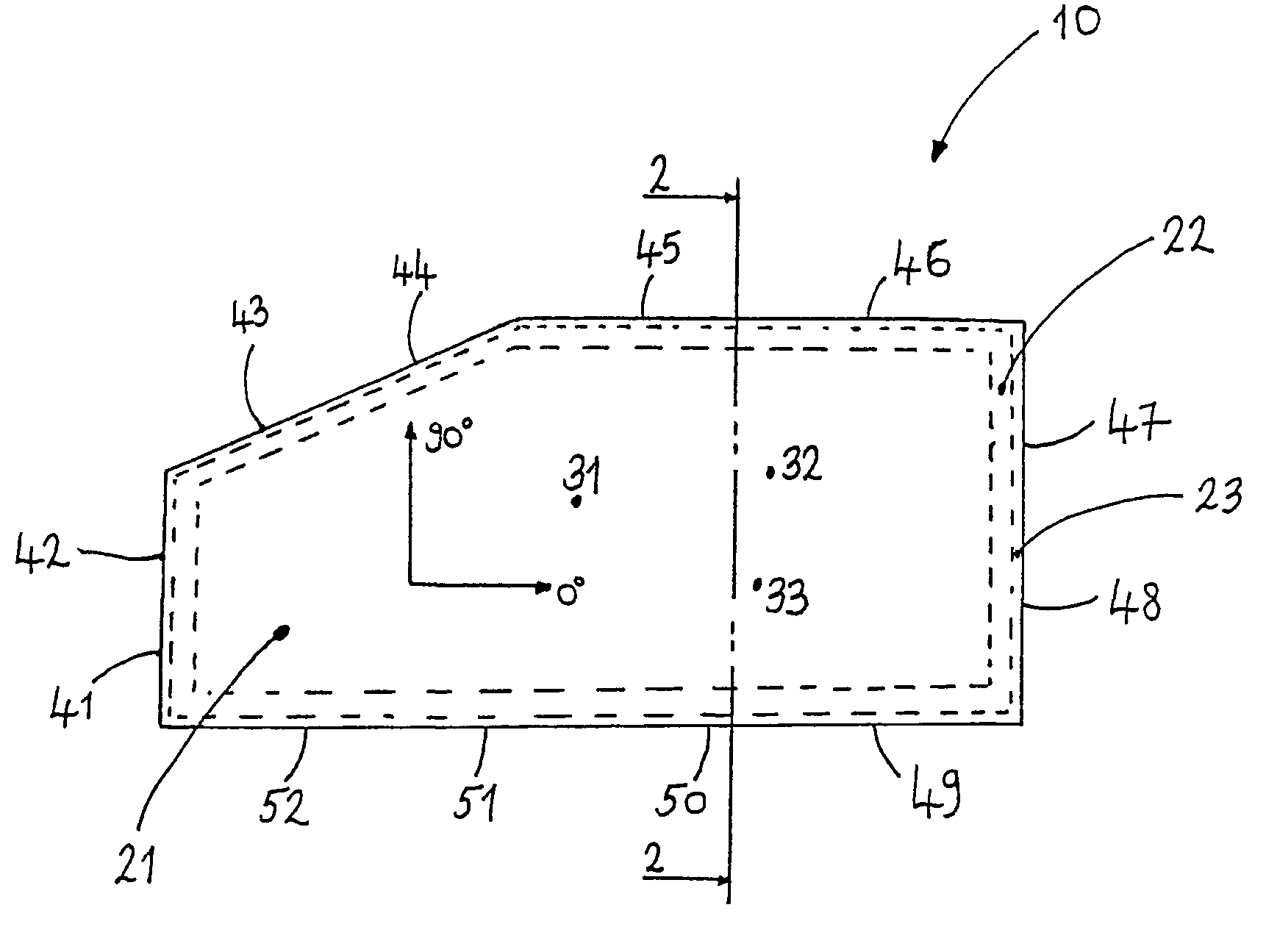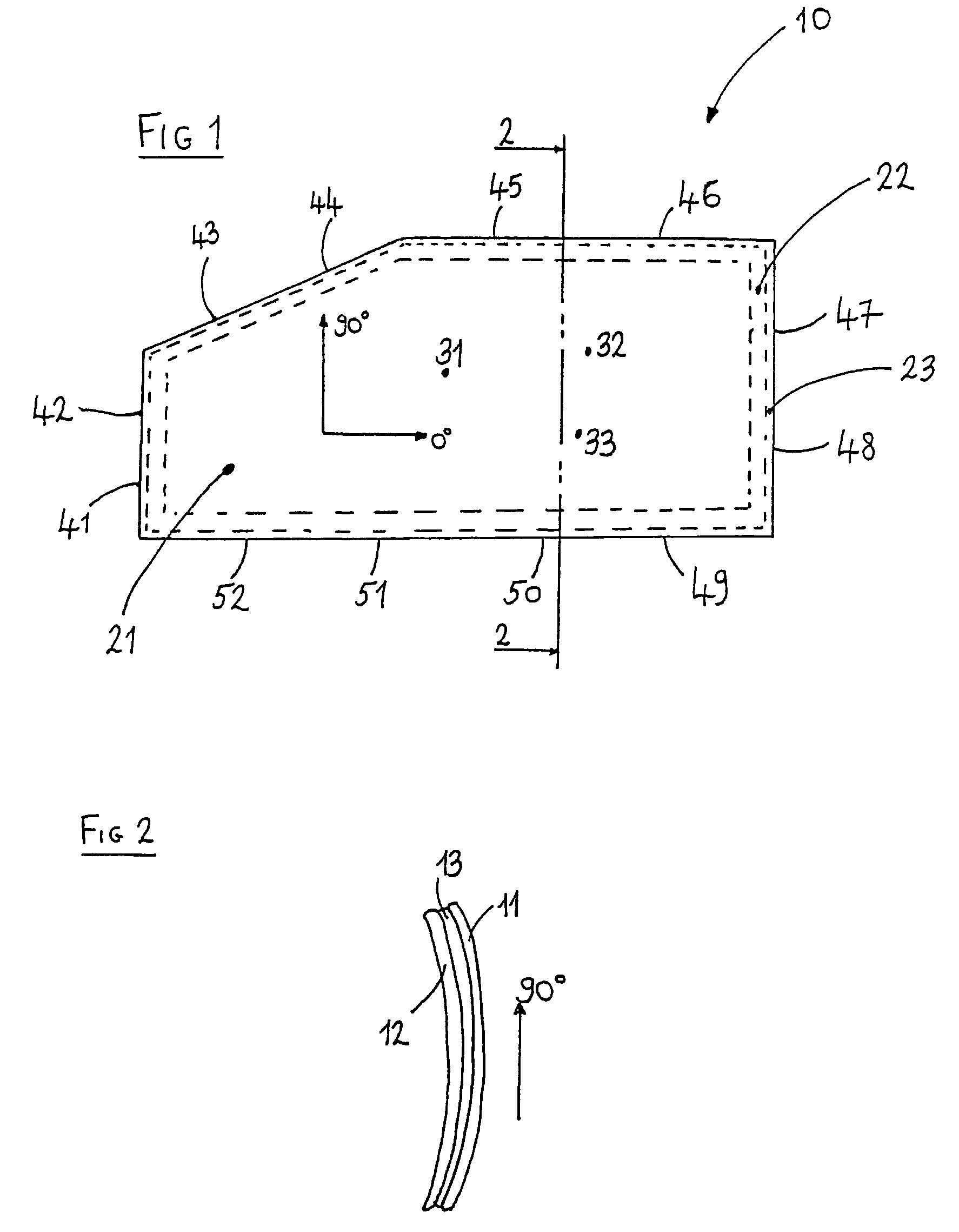Glazing
- Summary
- Abstract
- Description
- Claims
- Application Information
AI Technical Summary
Benefits of technology
Problems solved by technology
Method used
Image
Examples
Embodiment Construction
[0031]The accompanying drawings show a laminated glazing panel which forms a moveable side window of a car. The glazing 10 comprises first 11 and second 12 sheets of glass laminated together by means of a substantially transparent pvb laminating layer. It may be manufactured by cutting the desired peripheral shape of each sheet of glass from a flat, planar glass sheet to provide a blank, passing the blank through a furnace to raise its temperature sufficiently to allow it to be bent, pressing the heated blank against a convex mould to curve the blank, allowing the curved blank to cool and subsequently assembling and laminating it with a second similarly produced blank to produce a laminated glazing panel. Alternatively, a method of bending by gravity rather than by pressing may be used.
[0032]In the illustrated example, each of the glass sheets 11,12 has a thickness of 1.7 mm and has a similar stress distribution.
[0033]As indicated by the dotted lines in FIG. 1, the glass sheet may b...
PUM
| Property | Measurement | Unit |
|---|---|---|
| Length | aaaaa | aaaaa |
| Length | aaaaa | aaaaa |
| Thickness | aaaaa | aaaaa |
Abstract
Description
Claims
Application Information
 Login to View More
Login to View More - R&D
- Intellectual Property
- Life Sciences
- Materials
- Tech Scout
- Unparalleled Data Quality
- Higher Quality Content
- 60% Fewer Hallucinations
Browse by: Latest US Patents, China's latest patents, Technical Efficacy Thesaurus, Application Domain, Technology Topic, Popular Technical Reports.
© 2025 PatSnap. All rights reserved.Legal|Privacy policy|Modern Slavery Act Transparency Statement|Sitemap|About US| Contact US: help@patsnap.com


